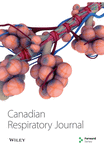The American Thoracic Society’s Spirometric Criteria Alone is Inadequate in Asthma Diagnosis
Abstract
BACKGROUND: The diagnosis of asthma is based on clinical symptoms, physical examination and pulmonary function tests, and can be very challenging. Most patients with asthma have a significant postbronchodilator response on spirometry indicating airway hyperresponsiveness. However, having a significant bronchodilator response by itself is not diagnostic of asthma. The definition of a ‘significant’ response has also been controversial. Many respirologists use the American Thoracic Society (ATS) postbronchodilator response criteria of 12% (provided it is 200 mL or greater) improvement in forced expiratory volume in 1 s (or forced vital capacity) from the baseline spirometry.
METHODS: In the present study, 644 patients who met the ATS criteria for a significant postbronchodilator spirometric response were retrospectively reviewed. The staff respirologist’s diagnosis of asthma, based on all clinical and pulmonary function data, was used as the standard for the diagnosis of asthma.
RESULTS: Relying on spirometric criteria alone was inadequate in asthma diagnosis because only 54.7% of 310 patients who met the ATS bronchodilator response criteria were thought to have clinical asthma. Increasing the postbronchodilator percentage improvement from the ATS criteria only marginally improved diagnostic specificity and resulted in a decline in sensitivity.
CONCLUSIONS: The results of the present study further emphasize the need to use spirometric criteria as a guide but not as an unimpeachable gold standard with which to make a diagnosis of asthma. The diagnosis of asthma depends on expert physician correlation of patient history, physical examination and pulmonary function test results.




